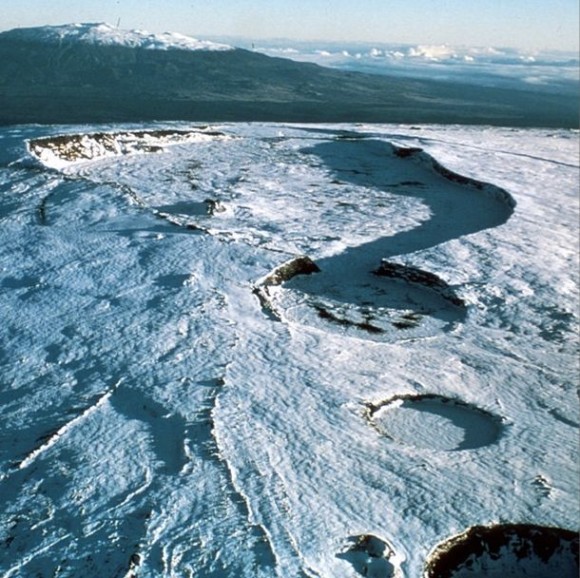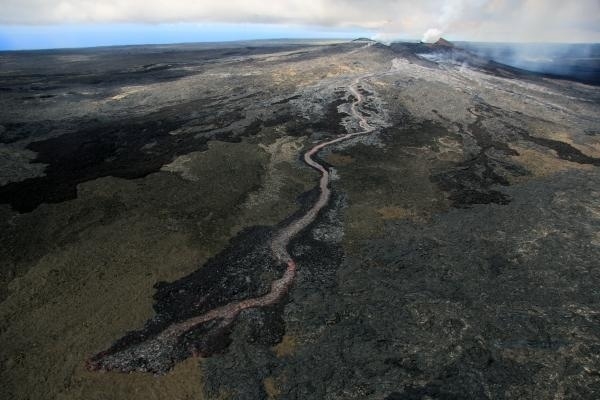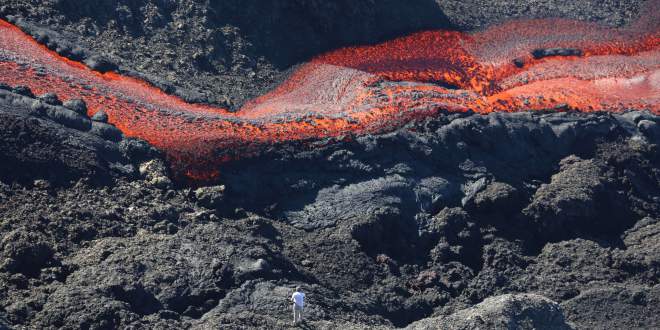
© USGSThe summit of Mauna Loa volcano in Hawaii.
Ready to rumble? The world's largest volcano - Hawaii's Mauna Loa - appears to be stirring back to life after a relatively quiet 30 years, geologists say. Don't fret: It isn't about to erupt at any minute, but four separate clusters of smaller earthquakes have been reported under Mauna Loa over the last 16 months, including as recently as April and May of this year, reports
LiveScience. Geologists from the Hawaii Volcano Observatory note that similar events preceded the volcano's last eruption in 1984 - though these latest quakes are smaller in comparison - which may indicate magma is on the move.
As
Wired explains further, the depth and location of the quakes suggests that magma is "refilling the reservoir that feeds Mauna Loa." Prior to the 1984 blast, scientists also observed ground deformation at the volcano's surface, as well as changes in gases streaming from cracks, and nothing like that has been seen in the last year or so. Still, the US Geological Society posted a
photo on Instragram this week with the phrase, "A Stirring Giant?" notes
EarthSky.org. You can track updates from the USGS on Mauna Loa
here. (Scientists recently discovered
a pair of rare tar volcanoes while searching for shipwrecks.)


Comment: Previously thought to be extensions of a single volcano, Mauna Loa is actually flanked by a curving line of individual volcanoes that include Kilauea, Mauna Kea and Kohala. Its summit is 56,000 feet above its base on the sea floor. Four distinct earthquake swarms have occurred since March 2013, all less than magnitude 2.2, save one that registered 3.5 on May 9, 2014, and have been occurring in the same areas of the volcano as those in the years prior to 1984. They are, so far, consistent with a model requiring rocks around the core to adjust to stress changes within the core. While Mauna Loa is not located along the Ring of Fire, it is likely that whatever disturbances and earth changes provoking recent Pac Rim activity are also escalating changes in other areas under the ocean.